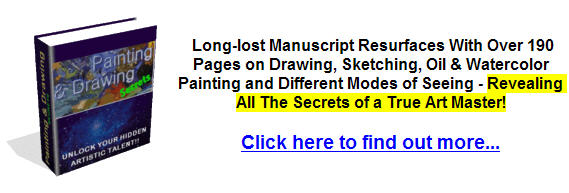Advantages And Disadvantages of Oil Paints And Paintings
Oil paint is different than other water based traditional media in that it will gradually harden after a prolonged exposure to air, during which the artist will have ample time to manipulate the paint days after it has been applied on canvas. The slow-drying property of oil paint make it the ideal medium to work with if you want develop you paintings at your leisure. Evidently, on the other hand, it might take up to months or even years before the paint dry up completely, which is less than ideal if you are working on a commission with a tight deadline. Oil painting can be diluted using thinning agents or solvents such as turpentine to enable the artist to apply layers and layers of paint. However, such solvents are typically flammable and includes ingredients that might be harmful the health, requiring the utmost care in handling it. The wide range and depth of colors available also give oil paints more advantage over other medium. Often rich and very vivid, the colors can be mixed more freely as compared to watercolor paint, for example. The tone of the color can often be manipulated by mixing the smallest amount of other paint into it, giving the artist full control of the intensity of the painting. Besides, given the hard-wearing nature of oil paint, there will be no obvious change the color and texture once it dries properly, thus giving the finished product a longer lifespan as compared to other artworks based on graphite or acrylics, to name a few. Working with oil paint presents a great variety of application techniques to try on. For example, oil paints can be worked into thin glazes or thick impastos to add diversity to your painting. The paints can also be mixed to give the appearance of opaque solidity, loose transparency and everything else in between. However, as mentioned above, the slow-drying nature of oil paints becomes a real problem when an artist is pressed for time to complete the painting. You should pace your progress properly to avoid this problem, since there is nothing you can do to reduce the drying time greatly, unless you are willing to risk possible damage on the canvas from desperate attempts to dry the paint. Oil paints can be painted over once dried to correct any mistakes you might made, but again, you have to wait for quite awhile until the previous layer of paint dries completely. Putting a new coat of paint over a relatively wet layer will only blend the paints into one another, which is definitely not desirable if you have no intention to do so in the first place. Besides, blending the oil paints on canvas often is a sign that an artist did not prepare their color palette thoughtfully in advance, thus resorting to mixing the colors on the go. Oil paintings can a tough medium to work with if you are not patience enough to see you work until the end. On the other hand, professional artists and casual hobbyists love the fact that oil paintings can be worked on slowly at their own leisure time and convenience, enabling them to work in multiple sessions and take regular breaks without being afraid of the paint drying up. Regardless, it is definitely a unique medium that can work to your advantage if you plan out your time properly.
Click here to find out more: http://oilpaintingtechniqueslessons.com/ColourBuster.html | |
|


Master the Colours DVD...

|
Although every attempt has been made to make information as accurate as possible, we are not responsible for any errors that may appear.
© Copyright 2015, OilPaintingTechniquesLessons.com. All Rights Reserved.






